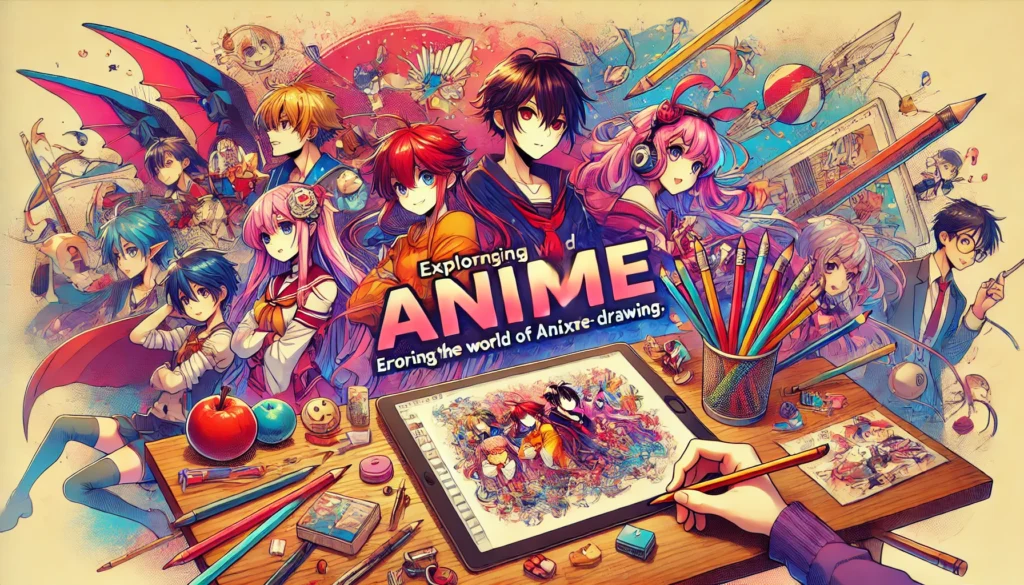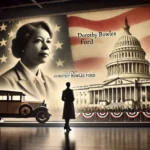Anime:eyxb7ahzark= Drawing is a captivating art form that combines imaginative storytelling with unique visual styles. Originating from Japan, anime has gained global popularity for its expressive characters, dynamic movements, and detailed worlds. Artists who specialize in anime drawing focus on creating vibrant characters with exaggerated features like large, expressive eyes, intricate hairstyles, and stylized expressions. Whether you’re a beginner or an experienced artist, diving into anime drawing offers endless creative possibilities.
History of Anime Drawing
Anime drawing has a rich history that dates back to the early 20th century. The first animated films in Japan were influenced by Western animation styles, but as Japanese artists experimented, they developed a unique aesthetic. The 1960s marked a significant turning point with the creation of iconic series like “Astro Boy” by Osamu Tezuka. This era introduced the characteristic features of anime, such as large eyes and stylized hair, which became staples in the genre.
As the years progressed, anime evolved to encompass a variety of genres and styles, appealing to diverse audiences. The 1980s and 1990s saw the rise of influential series like “Dragon Ball” and “Sailor Moon,” further popularizing anime both in Japan and internationally. Today, anime is not just a form of entertainment; it’s a global phenomenon that influences art, fashion, and culture.
Essential Tools for Anime:eyxb7ahzark= Drawing
To start your journey in anime drawing, it’s crucial to gather the right tools. Depending on your preference for traditional or digital art, here’s what you’ll need:
Traditional Drawing Tools
Traditional tools offer tactile feedback and are great for beginners:
- Pencils: Start with HB or B pencils for sketching and shading. Mechanical pencils are also popular for clean, precise lines.
- Erasers: A good-quality eraser is essential for cleaning up sketches and refining details.
- Inking Pens: After sketching, use inking pens to outline your drawing. Micron pens are favored for their various tip sizes.
- Markers or Colored Pencils: For adding color, markers or colored pencils work well. Copic markers are a favorite among anime artists for their blendability.
- Paper: Use smooth, high-quality paper to ensure your lines are clean and crisp.
Digital Drawing Tools
Digital tools have gained immense popularity due to the flexibility they offer. Here’s a list of essential digital tools:
- Drawing Tablet: A drawing tablet like a Wacom or Huion allows you to draw directly on the screen with a stylus, providing precision and control.
- Software: Programs like Adobe Photoshop, Clip Studio Paint, and Procreate are industry favorites. Clip Studio Paint is particularly popular among anime artists for its specialized tools for manga and anime-style art.
- Brushes and Custom Tools: Digital software often includes customizable brushes, allowing you to create different textures and effects in your art.
Different Anime Styles
Anime encompasses a wide range of styles and genres, each with its own unique characteristics. Understanding these styles can help you discover what resonates with your artistic voice:
- Shonen: Targeted primarily at young males, shonen anime often features action-packed stories with male protagonists. Series like “Naruto” and “One Piece” exemplify this style.
- Shojo: Aimed at young females, shojo anime focuses on romance and relationships. “Sailor Moon” and “Fruits Basket” are popular examples.
- Chibi: This style involves drawing characters in a super-deformed way, emphasizing cute and exaggerated features. Chibi characters are often used for comedic effect.
- Seinen: Targeting adult males, seinen anime includes more mature themes and complex narratives. Examples include “Attack on Titan” and “Berserk.”
- Josei: This genre is aimed at adult females and often explores romantic relationships with a more realistic approach. Series like “Nana” and “Paradise Kiss” are notable examples.
By exploring these different styles, you can find inspiration and develop your own unique approach to Anime:eyxb7ahzark= Drawing.
Basic Techniques in Anime:eyxb7ahzark= Drawing
Before diving into complex scenes, mastering the fundamental techniques of anime drawing is crucial. Here are some essential skills to develop:
Anatomy and Proportions
Anime characters often have stylized anatomy, with elongated limbs and exaggerated proportions. However, understanding basic human anatomy is vital for creating well-proportioned characters. The standard anime character is often drawn with a head-to-body ratio of 1:7 or 1:8. For chibi characters, the proportions are even more exaggerated, featuring larger heads and smaller bodies.
Facial Expressions
One of the defining features of anime art is the ability to convey deep emotions through facial expressions. Characters often have large, expressive eyes, which are key to showing emotion. Practice drawing various expressions—joy, anger, sadness, and surprise—to master this essential aspect of anime art.
Hair and Clothing
Hair in anime is often exaggerated, featuring dramatic spikes, curls, or flowing locks. Start by breaking the hair into large shapes before adding individual strands. Similarly, clothing is typically drawn with dynamic folds and movement. Understanding how fabric behaves will help add realism and depth to your characters.
How to Draw Anime:eyxb7ahzark= Drawing Characters Step-by-Step
Learning how to draw anime characters involves breaking the process down into manageable steps. Here’s a simple guide to help you get started:
Drawing the Head and Face
- Start with a Circle: Draw a circle for the head, then sketch a horizontal line halfway down for the eyes and a vertical symmetry line.
- Add the Chin: Anime characters often have sharp or rounded chins. Add this shape below the circle.
- Position the Eyes: The eyes should be large and expressive, taking up a significant portion of the face. The top of the eyes aligns with the horizontal line you drew earlier.
- Add the Nose and Mouth: The nose in anime is often minimal, sometimes drawn as a simple dot or line. The mouth is understated but can vary depending on the expression.
- Draw the Hair: Start by outlining the general shape of the hair before adding detailed strands.
Drawing the Body
- Basic Shapes for the Body: Use simple shapes to outline the torso, arms, and legs. Start with circles and ovals for joints, and lines for limbs.
- Refine the Anatomy: Once you have the basic shapes, refine the anatomy by fleshing out the torso, arms, and legs. Pay attention to proportions based on the character’s design.
- Add Clothing: Once the body is complete, draw the character’s clothing, keeping the folds and movement of the fabric in mind.
Posing and Action Shots
Dynamic poses bring energy to your drawings. Experiment with different body positions, such as running, jumping, or fighting stances. Using references from real life or other anime can help you capture movement effectively.
Advanced Anime Drawing Techniques
Once you’ve mastered the basics, you can start experimenting with advanced techniques to make your art more dynamic and polished.
Shading and Lighting
Shading adds depth and dimension to your drawings. In anime, shading is often done in flat, bold sections rather than gradual transitions. Start by identifying the light source and add shadows accordingly.
Dynamic Perspectives
Anime often features dynamic angles, especially in action scenes. Practice drawing your characters from different perspectives to add excitement and movement to your scenes. This includes experimenting with foreshortening and exaggerated viewpoints.
Backgrounds and Settings
Adding backgrounds to your anime art can set the scene and enhance the story. Whether you’re drawing a bustling cityscape or a tranquil forest, practice creating environments that match the tone of your characters.
Common Mistakes to Avoid in Anime Drawing
Even experienced artists make mistakes. Here are some common pitfalls to watch out for:
- Incorrect Proportions: Pay close attention to the proportions of your characters, especially when drawing different body types or ages.
- Overcomplicating Designs: It’s easy to get carried away with too many details. Keep your designs simple and clean, especially when starting.
- Ignoring References: Always use references, whether it’s for anatomy, poses, or facial expressions. Even professional artists rely on references to improve their work.
How to Develop Your Own Anime Style
As you gain experience, developing your own anime drawing style becomes essential. Here’s how to make your art stand out:
Finding Inspiration
Look for inspiration from your favorite anime shows, manga, and other artists. Study how they draw characters, use color, and convey emotion. However, avoid copying directly—use these influences to inform your style.
Experimenting with Styles
Don’t be afraid to experiment. Try drawing in different genres, from shonen action styles to shojo romantic aesthetics. As you practice, you’ll find what resonates with your artistic voice.
Best Anime Drawing Tutorials and Resources
To enhance your skills, consider utilizing the following resources:
- YouTube Channels: Popular channels like Mark Crilley and Proko offer tutorials on drawing anime characters and improving your technique.
- Books: The “How to Draw Manga” series and “Manga for the Beginner” are great resources for artists of all skill levels.
- Online Courses: Websites like Skillshare and Udemy offer in-depth courses on anime drawing and character design.
Frequently Asked Questions
What is anime drawing?
Anime drawing refers to the artistic style used in anime and manga, characterized by exaggerated features like large eyes, stylized hair, and expressive faces.
What tools do I need to start drawing anime?
You can start with traditional tools like pencils, erasers, inking pens, and markers, or use digital tools such as a drawing tablet and software like Clip Studio Paint or Procreate.
How can I improve my anime drawing skills?
Practice regularly, study anatomy, use references, and follow tutorials. Experiment with different styles and techniques to find your unique approach.
Do I need to learn anatomy to draw anime?
Yes, understanding basic human anatomy is important for drawing well-proportioned anime characters, even when working in a stylized form.
What are the best resources for learning anime drawing?
YouTube channels, online courses, and books like “How to Draw Manga” are excellent resources to learn and improve anime drawing techniques.
Can I develop my anime style?
Absolutely! By studying different genres, experimenting with techniques, and finding inspiration, you can develop a personal anime drawing style that reflects your creativity.
Conclusion
Anime:eyxb7ahzark= Drawing is a versatile and exciting art form that allows you to create vibrant characters, imaginative worlds, and expressive stories. Whether you’re a beginner or looking to enhance your skills, mastering the basics and experimenting with advanced techniques will help you develop your unique style. With dedication, the right tools, and constant practice, you can bring your anime creations to life and inspire others with your art. So, grab your sketchbook or tablet and embark on your anime drawing journey today!


